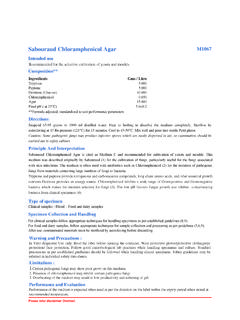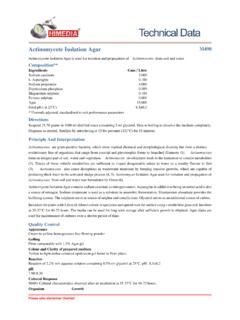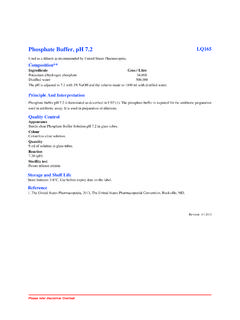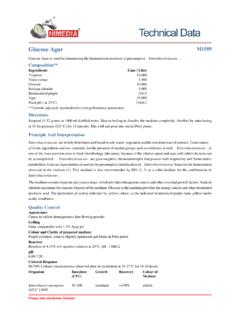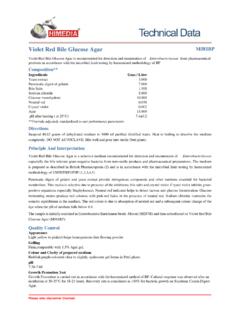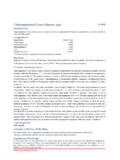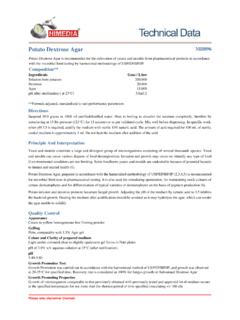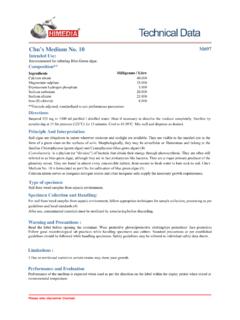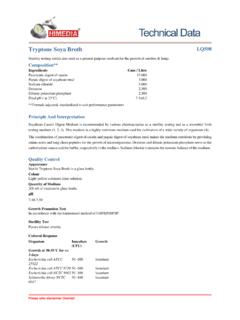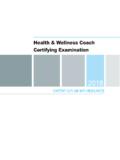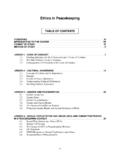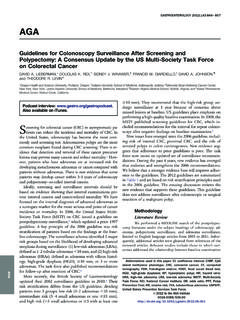Transcription of Shigella Broth Base - HiMedia Labs
1 Please refer disclaimer Broth BaseM1326 Shigella Broth base is used for the isolation and cultivation of Shigella species from **IngredientsGms / LitreCasein enzymic hydrogen dihydrogen pH ( at 25 C) **Formula adjusted, standardized to suit performance parametersDirectionsSuspend grams in 1000 ml distilled water. Heat if necessary to dissolve the medium completely. Sterilize by autoclavingat 15 lbs pressure (121 C) for 15 minutes. Cool medium to 45-50 C and add rehydrated content of 1 vial of Shigella SelectiveSupplement (FD108) under aseptic conditions. Mix well and dispense in sterile test And InterpretationShigella are gram-negative, non-motile, non-spore forming rod-shaped bacteria closely related to Escherichia coli andSalmonella . Shigella infection is typically via ingestion (faecal-oral contamination), depending on age and condition of thehost, as few as 10 bacterial cells can be enough to cause an infection. Shigella causes dysentery that results in the destructionof the epithelial cells of the intestinal mucosa in the cecum and rectum.
2 Some strains produce enterotoxin and Shiga toxin,similar to the verotoxin of E. coli O157:H7(1). Shigella Broth base is used for the isolation and cultivation of Shigellaspecies (2), as recommended by APHA (3). Shigella Broth base contains casein enzymic hydrolysate as a source of carbon, nitrogen, vitamins and minerals. Dextroseprovides the necessary carbohydrates. Buffering action in the medium is provided by dipotassium hydrogen phosphate andpotassium dihydrogen phosphate. Sodium chloride maintains the osmotic balance of the medium. Polysorbate 80 is inhibitoryfor growth of accompanying microflora besides providing growth factors. Novobiocin is inhibitory for gram-positive bacteriasuch as S. aureus and certain gram-negative organisms such as H. influenzae and some species of Proteus .Quality ControlAppearanceCream to yellow homogeneous free flowing powderColour and Clarity of prepared mediumLight amber coloured clear solutionReactionReaction of aqueous solution at 25 C.
3 PH : ResponseM1326: Cultural characteristics observed after an incubation at 35-37 C for 18-24 hours with added Shigella SelectiveSupplement (FD108).OrganismInoculum(CFU)GrowthCultu ral ResponseShigella dysenteriae ATCC1331350-100luxuriantHiMedia LaboratoriesTechnical DataShigella flexneri ATCC1202250-100luxuriantShigella sonnei ATCC 2593150-100luxuriantStaphylococcus aureusATCC 25923>=10 inhibitedStorage and Shelf LifeStore below 30 C in tightly closed container and the prepared medium at 2-8 C. Use before expiry date on the Hale T. L., Keusch G. T., 1996, Shigella . In: Barons Medical Microbiology (Barron S et al, Eds.), 4th Ed., Univ of TexasMedical Atlas , 1997, Handbook of Microbiological Media 2nd Edition, CRC Press, Boca Raton, New York, London, Downes F. P. and Ito K., (Ed.), 2001, Compendium of Methods for the Microbiological Examination of Foods, 4th Ed.,American Public Health Association, Washington, : 02 / 2015 HiMedia Laboratories Pvt. Ltd. A-516,Swastik Disha Business Park,Via Vadhani Ind.
4 Est., LBS Marg, Mumbai-400086, India. Customer care No.: 022-61471919 Email: :User must ensure suitability of the product(s) in their application prior to use. Products conform solely to the information contained inthis and other related HiMedia publications. The information contained in this publication is based on our research and developmentwork and is to the best of our knowledge true and accurate. HiMedia Laboratories Pvt Ltd reserves the right to make changes tospecifications and information related to the products at any time. Products are not intended for human or animal or therapeutic use butfor laboratory,diagnostic, research or further manufacturing use only, unless otherwise specified. Statements contained herein should notbe considered as a warranty of any kind, expressed or implied, and no liability is accepted for infringement of any patents.
